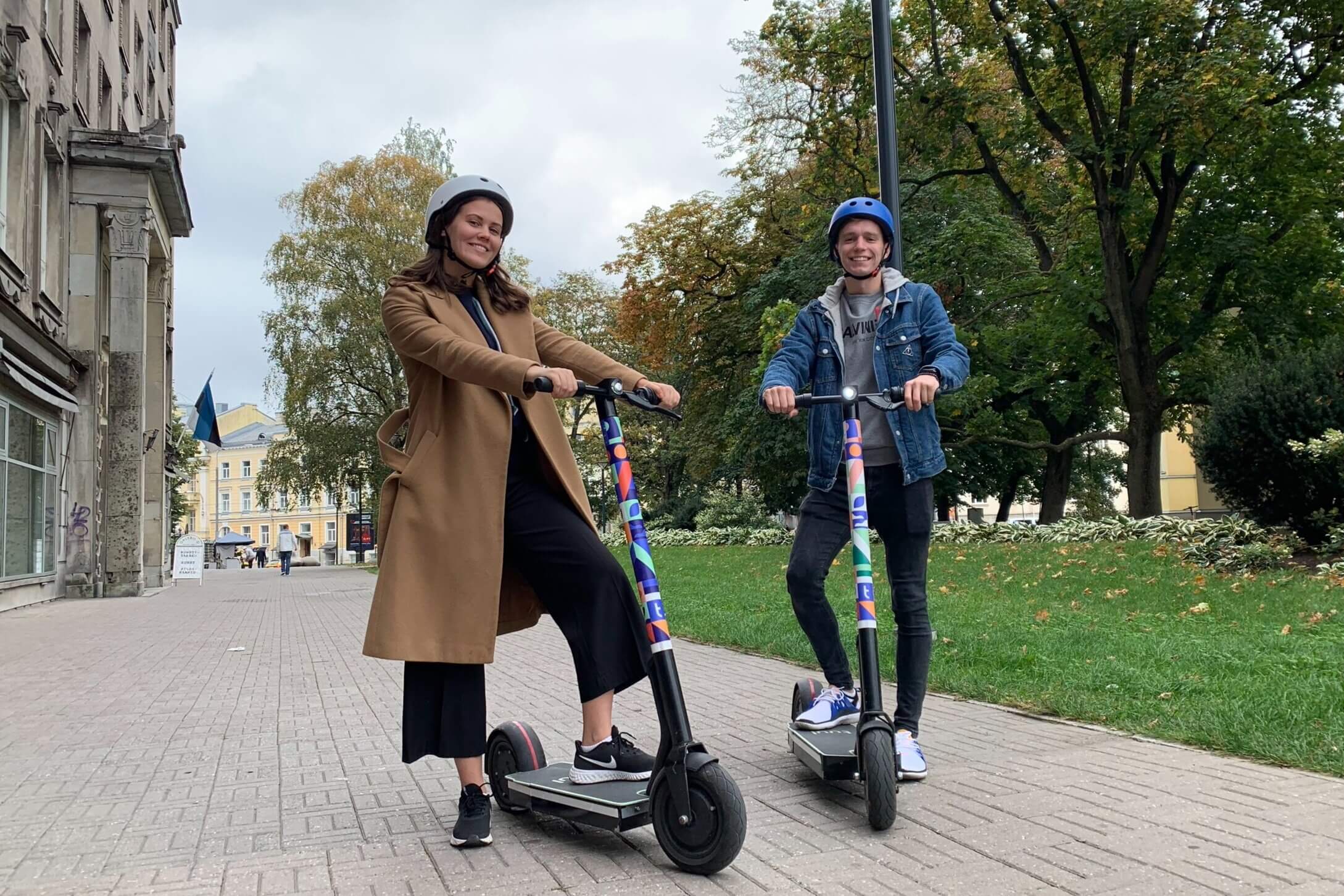What will the year 2021 bring to the world of electric scooters?
The discussion about the lack of regulations for electric scooters has been talked about for months, as the has been no law that would regulate who, where, and at what speed could ride electric scooters that conquer the cityscape. Now, as of January 1, 2021, a nationwide “E-scooter law” has been enforced, with the purpose of ensuring safety for drivers, pedestrians, and scooter enthusiasts alike.
New Year, New Law
The 1st of January did bring us high expectations and hopes for the new year and the enforcement of the Traffic Act Amendment Act 191 SE, ie the “e-scooter law”. A new category of vehicles was introduced – the “light mobility vehicle” (kergliikur in Estonian). This vehicle category includes electric scooters, electric skateboards, and hoverboards designed to carry one person without a seat.
“What needed to happen – happened. Legislation must catch up to society. It should have happened faster, of course, but we are delighted that it happened at all,” said Kristjan Maruste, CEO of Tuul on Äripäev radio. Morten Merila, the program manager of Äripäev’s conferences, agreed and added that this type of legislation ensures the riders of e-scooters will have a stronger sense of responsibility, thereby making the city and overall traffic culture a safer space for everyone.
According to Kristjan, the law should have been adopted last year, because scooters, like other similar micro-mobility vehicles such as bicycles, must be regulated. The main regulation will cover the supervision of scooters imported into the country. From January 1st, 2021, customs will no longer allow the entry of electric scooters that hit speeds faster than 25 km / h. The definition of a rider on an electric scooter has also changed – while last year, a person riding a scooter could be categorized as a pedestrian. They are now officially considered “drivers”.
What does a Tuul rider need to know about the new “e-scooter law”?
-
The maximum permitted speed while riding an electric scooter is 25 km/h when riding a private scooter and 20 km/h when riding with a rental scooter, such as Tuul.
-
The driver of a light mobility vehicle under 16 is now legally required to wear a bicycle helmet.
-
An electric scooter can be ridden on a bike lane, footpath, or sidewalk. In the absence of such a road or part of a road, the scooter must be driven on the right side of the road or curb.
-
When approaching an intersection, the rider must slow down in good time so that the speed of riding while crossing the road does not exceed the average speed of a pedestrian. The same principle must be followed on other pedestrian-friendly sections of the roadie. All pedestrians must be passed at a low and safe speed.
-
Although the rider of an e-scooter has been reclassified as a “driver”, the light motorist does not prioritize cars (unless the e-scooter rider crosses the road at a pedestrian street-crossing).
-
Parking regulations are also kept short and sweet. Scooters parked on sidewalks must leave a space of at least 1.5m for pedestrians and ensure that the next user can easily access the scooter.
A safer cityscape for all of us
Overall, we should all be quite delighted that such a law has finally been passed. Considering that there are still few proper cycle paths in Estonia, with many cities and towns having no bike lanes at all, the aforementioned solutions are a step in the right direction for the general safety of light traffic.
“A lot of discussions have been had about the dangers of scooters to society as they confuse people and create a feeling of insecurity. I believe the exact opposite is that scooters are extremely safe vehicles and perhaps even safer than bicycles. In case of an emergency, you can easily hop off a scooter right away, brake very easily, have a better overview of your surroundings and now the permitted speed is lower,” says Kristjan. Just as car drivers’ rights are limited to ensure safety, it is logical that this phenomenon is applied to the riders of e-scooters as well.
Already in 2020, we could see that as the days got warmer, micro-mobility enthusiasts began migrating back to the city on their various vehicles. Seeing as the snow and ice have not been able to stop the townspeople’s joy and enthusiasm, we can only assume that 2021 will bring even more joyous riding to us all.
Psst! Read more about how to ride an e-scooter more safely in winter conditions from HERE!
We wish everyone safe and fun riding experiences for 2021!


